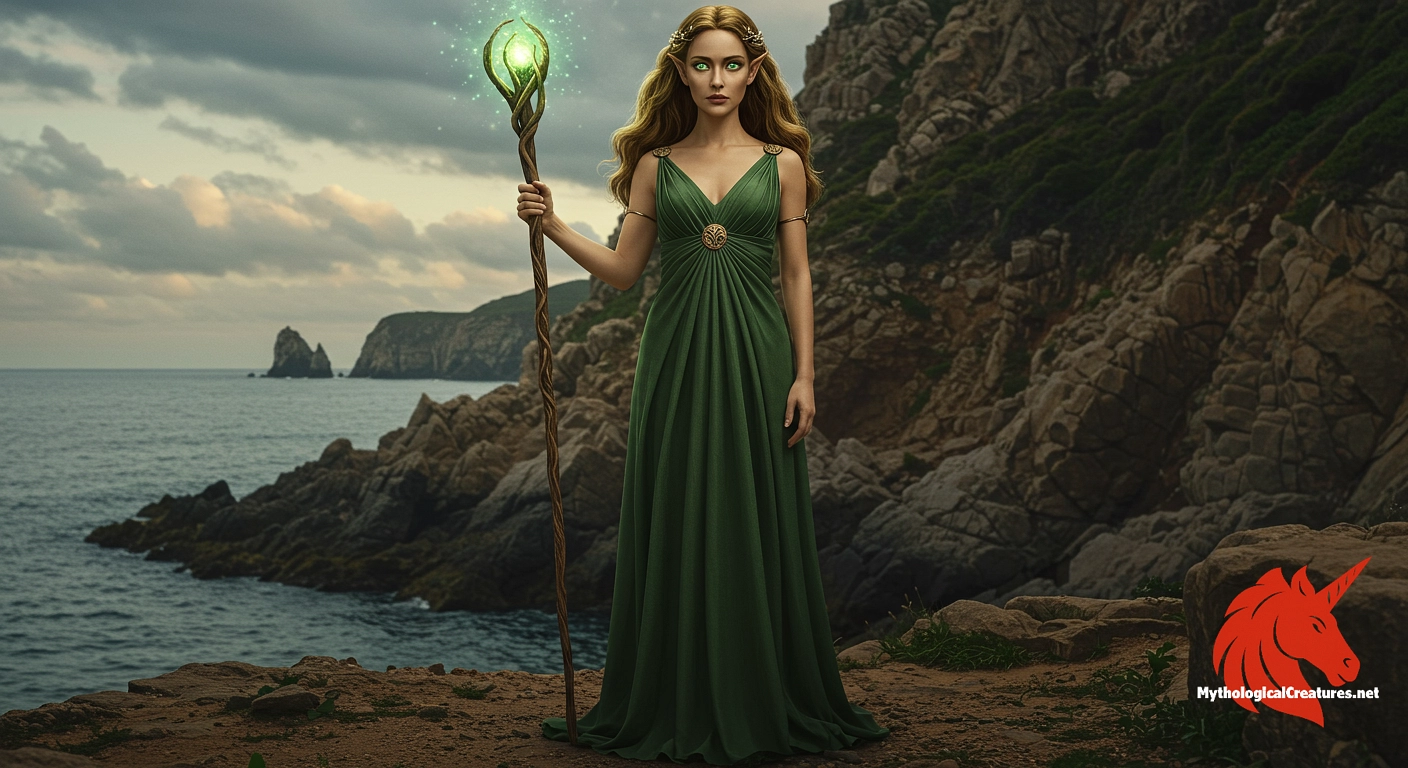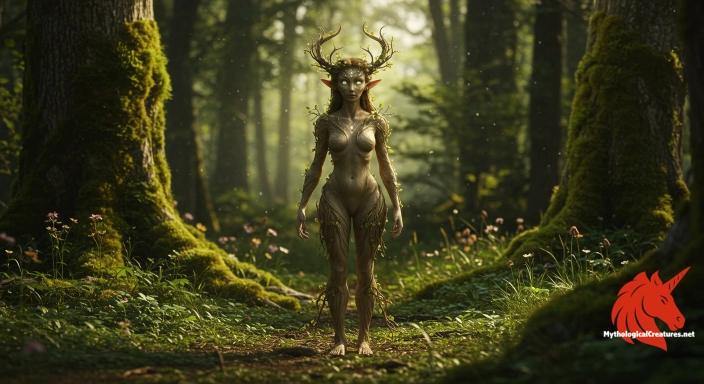Circe: Circe is an enchantress and minor goddess from ancient Greek mythology, renowned for her transformative magic and herbal knowledge.

Circe
Circe - Her narrative has influenced interpretations of magic, transformation, and the archetype of the predatory female in Western art and literature.
Origins & First Encounters
Circe emerges as one of the most enigmatic figures in Greek mythology, captivating audiences with her blend of divine power and human complexity. Born of Helios and the Oceanid nymph Perse, she carries a legacy intertwined with celestial brilliance and the mysterious allure of the sea. Her first enduring appearance in literary tradition arises in Homer's Odyssey, where her island of Aeaea sets the stage for dramatic encounters with the wily hero Odysseus. The myth encapsulates themes of transformation and seduction, inviting readers to explore both the beauty and danger inherent in her character. Over time, her narrative has been adapted and reinterpreted to echo the shifts in cultural attitudes towards power and gender. The allure of her potent magic and the intimate conflicts she embodies have made her a subject of fascination from antiquity through to modern scholarship. Her multifaceted role in myth reflects a balance of caution and admiration, subtly questioning the limits of control over nature and fate. As a minor goddess and a formidable sorceress, she personifies the blurred lines between mortal frailty and divine transcendence. Her story is as much a cautionary tale as it is an exploration of personal empowerment and the complexities of desire. Ultimately, Circe’s enduring presence in mythology highlights her vital role as both a beacon of transformation and an emblem of the seductive unknown.
Source Texts & Tale Variants
Ancient texts serve as the primary canvas upon which Circe’s multifarious legend is painted, with Homer's Odyssey providing the most iconic version of her exploits. Multiple literary works offer variant accounts of her life, each emphasising different aspects of her potent charm and formidable abilities. The narrative of her turning Odysseus’ crew into swine is woven into the fabric of classical storytelling, resonating with audiences through its blend of magic and moral complexity. Later writers, including those in Roman literary traditions, enriched her myth by incorporating resonances of envy, power, and transformation. Ovid’s Metamorphoses, for instance, introduces additional layers by intertwining her story with themes of passionate desire and tragic consequence. Various sources sometimes cast her as not only a seductress but also a wise practitioner of the natural arts. In some accounts, she is portrayed as a reflective figure who invokes both fear and admiration in those around her. These textual traditions have offered fertile ground for reinterpretations that highlight different facets of her character. Many medieval and Renaissance works later drew upon these ancient sources to reinterpret her as a symbol of both peril and empowerment. Through centuries of retelling, her story continues to be shaped by the evolving priorities of each cultural epoch.
Form & Powers
Artistic renderings of Circe have long celebrated her as a figure of transcendent beauty, often merging the ethereal with the tangible. She is frequently depicted as possessing luminous, flowing hair that echoes the golden hues of her divine lineage. Her facial features, imbued with an enigmatic grace, balance softness with a penetrating intensity that hints at her formidable inner strength. Classical imagery often portrays her with an almost statuesque quality, where every gesture exudes both seduction and latent power. In many depictions, she is adorned in flowing robes or draped fabrics that seem to shimmer with a life of their own, symbolising her connection to the natural and supernatural realms. The contrast between her delicate features and the potent symbolism of her gaze creates a tension that has fascinated artists over the centuries. Some versions even suggest a subtle, animalistic quality in her appearance, a nod to the transformative magic she exercises. The interplay of light and shadow in classical paintings accentuates the mysterious aura that surrounds her. Even as interpretations vary, the consistent theme is of a woman whose physical presence embodies both beauty and danger. This amalgamation of elegance and power cements her image as a timeless icon of myth and magic.
Regional Faces
The portrayal of Circe varies markedly across different cultural regions, each adding its own interpretive twist to her legend. In the heart of ancient Greece, her narrative is predominantly portrayed within the classical canon, where she is both a benevolent guide and a feared enchantress. In Roman contexts, her image is at times intertwined with local deities of magic and transformation, reflecting broader Mediterranean sensibilities. Medieval European interpretations often cast her as a symbol of the illicit and the otherworldly, underscoring the era’s ambivalence towards feminine power. Renaissance art reimagined her as an embodiment of sensuality and dramatic transformation, a reflection of the period’s fascination with both beauty and moral complexity. In contrast, modern reinterpretations in various Western traditions have sought to reframe her narrative in light of emerging feminist thought. These regional adaptations allow her to serve as a mirror for the cultural values and anxieties of each period, whether as a cautionary figure or as a complex symbol of empowerment. Within folklore and popular tradition, particularly in the Mediterranean, she is often associated with the mysterious qualities of islands and the sea. Local adaptations sometimes integrate aspects of pre-Greek myth, blending her identity with regional legends about nature spirits and magical healing. The varied regional portrayals of Circe thus illustrate the fluidity of myth and the capacity of ancient stories to endlessly evolve.
Cultural Parallels
Circe’s rich narrative invites direct comparisons with several other figures in myth and legend across different cultures. Her transformative magic bears similarities to that of Medea, another spellbinding figure whose story resonates with themes of both love and vengeance. In the realm of Arthurian legend, parallels can be drawn with Morgan le Fay, whose mystical allure and ambiguous morality echo Circe’s own dual nature. The motif of transformation appears across diverse traditions, linking her with shamanic figures and shape-shifters who traverse the boundaries of human and animal realms. Her predatory yet intriguing character also draws comparisons with folkloric archetypes such as the femme fatale, which appear in various cultural narratives. Across the spectrum of world myth, there is a recurring emphasis on the tension between charm and danger inherent to female magical beings. The nuanced interplay of seduction and retribution in her story resonates with broader themes found in tales of enchantresses from both European and Mediterranean traditions. This comparative lens enriches our understanding of her multifaceted role within the larger mythological landscape. By situating her alongside similar figures from different cultures, one can appreciate how shared motifs of transformation and desire transcend regional boundaries. In revealing these cross-cultural connections, Circe emerges not only as an individual mythic personality but also as a universal symbol of the volatile allure of magic.
Legacy & Modern Evolution
The legend of Circe has evolved profoundly from its ancient origins to a celebrated modern legacy, reflecting shifting cultural attitudes over the centuries. Early portrayals drastically underscored her role as a dangerous enchantress, a cautionary example of magical hubris and unchecked desire. During the Renaissance, she was frequently depicted as a symbolic embodiment of both seduction and moral ambiguity, often serving as a mirror for society's conflicted views on female power. In more recent times, reinterpretations have highlighted her complexity, presenting her as a figure of empowerment as well as vulnerability. Modern literary and artistic adaptations increasingly explore the psychological dimensions of her character, offering a more empathetic view of her motives and inner conflicts. Her narrative has become a rich source of inspiration for discussions on gender, authority, and the rewriting of myth in light of contemporary values. Filmmakers, novelists, and visual artists alike have reimagined her story to challenge traditional notions of femininity and magic. The transformation of her image reflects broader cultural shifts, where the traits once seen as purely dangerous now contribute to an emblem of self-assertion and resilience. Her enduring appeal lies in the layered symbolism of transformation—both literal and metaphorical—encouraging audiences to reflect on the boundaries between human nature and divine power. In reinterpreting her ancient myth, contemporary creators continue to affirm Circe’s place as one of mythology’s most compelling and multifaceted figures.
Interesting Fact
Circe's portrayal as both a benevolent hostess and a fearsome enchantress exemplifies the complex interplay of attraction and menace often found in mythological narratives.
Quick Creature Info
Origin:
Features:
Our Mythic Legendary Rating:

Also Sometimes Known As:
Habitat:
Supernatural Powers:
Physical Attributes:
Abilities:
Behavior:
Weaknesses:
Lore:
Related Creatures, Tales or Lore
- MMedea
- HHecate
- MMorgan le Fay
References
Discover Another Mythical Legend You May Not Have Heard Of?
Uncover the mysteries of ancient folklore and expand your knowledge of legendary beings from cultures around the world.
Dare to Meet the Atlanteia....
Mythical Disclaimer: The images and data on this site are derived from various historical and literary sources, but we have found that many myths often have multiple versions and interpretations across references, sometimes contradictory. As a result, these creature depictions are artistic interpretations—imaginative blends of folklore, legend, and a dash of AI guesswork. Because creature descriptions vary widely, our illustrations and accompanying information represent our best effort to honor mythology while bridging creative gaps. Enjoy these interpretations—just remember, we've done our best to respect the stories and validate available data, but in the realm of mythology, details often shift, imagination leads the way, and nothing is ever set in stone!
Curated by the Mythological Creatures Team (rev. May 2025)
